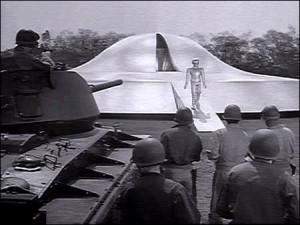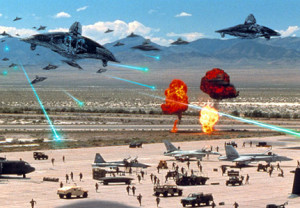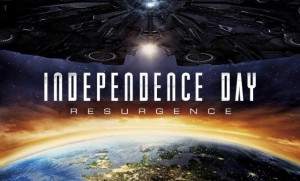Archives
- April 2025
- March 2025
- December 2024
- October 2024
- August 2024
- September 2023
- August 2023
- July 2023
- April 2023
- January 2023
- December 2022
- November 2022
- October 2022
- August 2022
- June 2022
- May 2022
- April 2022
- March 2022
- February 2022
- January 2022
- November 2021
- October 2021
- September 2021
- August 2021
- July 2021
- April 2021
- March 2021
- February 2021
- October 2020
- September 2020
- July 2020
- April 2020
- March 2020
- February 2020
- January 2020
- November 2019
- September 2019
- August 2019
- July 2019
- June 2019
- May 2019
- April 2019
- February 2019
- January 2019
- December 2018
- November 2018
- October 2018
- September 2018
- August 2018
- June 2018
- May 2018
- April 2018
- March 2018
- January 2018
- December 2017
- November 2017
- October 2017
- August 2017
- July 2017
- June 2017
- May 2017
- April 2017
- March 2017
- February 2017
- December 2016
- November 2016
- October 2016
- September 2016
- August 2016
- July 2016
- June 2016
- May 2016
- April 2016
- March 2016
- February 2016
- January 2016
- December 2015
- November 2015
- October 2015
- September 2015
- August 2015
- July 2015
- June 2015
- May 2015
- April 2015
- March 2015
- February 2015
- January 2015
- December 2014
- November 2014
- October 2014
- September 2014
- August 2014
- July 2014
- June 2014
- May 2014
- April 2014
- March 2014
- February 2014
- January 2014
- December 2013
- November 2013
- October 2013
- September 2013
- August 2013
- July 2013
- June 2013
- May 2013
- April 2013
- March 2013
- February 2013
- January 2013
- December 2012
- November 2012
- October 2012
- September 2012
- August 2012
- July 2012
- June 2012
- May 2012
- April 2012
- March 2012
- February 2012
- January 2012
- December 2011
- November 2011
- October 2011
- September 2011
- August 2011
- July 2011
- June 2011
- May 2011
- April 2011
- March 2011
- February 2011
- January 2011
- December 2010
- November 2010
- October 2010
- September 2010
- August 2010
- July 2010
- June 2010
- May 2010
- April 2010
- March 2010
- February 2010
- January 2010
- December 2009
- November 2009
- October 2009
- September 2009
- August 2009
- July 2009
- June 2009
- May 2009
- April 2009
- March 2009
- February 2009
- January 2009
- December 2008
- November 2008
- October 2008
- September 2008
- August 2008
- July 2008
- June 2008
- May 2008
- April 2008
- March 2008
- February 2008
- January 2008
- December 2007
- November 2007
- October 2007
- September 2007
- August 2007
- July 2007
- June 2007
- May 2007
- April 2007
- March 2007
- February 2007
- January 2007
Interview with William Astore on the Military in Science Fiction
Regular readers of this blog may recall that in a previous post I recently I drew attention to an interesting article by William Astore in The Nation titled “Can You Spot the American Military in Your Favorite Sci-Fi Film?.” I thought the topic was worth taking a closer look at, so I got in touch with Astore. He was very wiling to answer a few questions on the topic.
TheoFantastique: Bill, thanks for making a little time to respond to a few questions related to the subject matter of your article. What are some general observations you have made about the shift in science fiction film depictions of the American military from the post-World War II period to the present?
 Bill Astore: Thanks for inviting me, John. I grew up in the late 1960s and 1970s, in the immediate aftermath of the Vietnam War and Watergate. Films of that era were generally critical of the establishment, including sci-fi films. I fondly recall Planet of the Apes with its anti-nuclear message. Also Soylent Green with its warning about over-population, but even more dire was the way in which the authorities hid from the people the true nature of their new food source. Think also of Capricorn One, hardly a great film, but one which exposed a government conspiracy at the heart of the first manned mission to Mars. And Silent Running with Bruce Dern. The basic message was how humans were destroying planet earth, often due to nuclear war or environmental destruction, or both. Finally, Logan’s Run was a favorite of mine, but again the message was how the government of that world hid from the people the true nature of life outside of the bubble.
Bill Astore: Thanks for inviting me, John. I grew up in the late 1960s and 1970s, in the immediate aftermath of the Vietnam War and Watergate. Films of that era were generally critical of the establishment, including sci-fi films. I fondly recall Planet of the Apes with its anti-nuclear message. Also Soylent Green with its warning about over-population, but even more dire was the way in which the authorities hid from the people the true nature of their new food source. Think also of Capricorn One, hardly a great film, but one which exposed a government conspiracy at the heart of the first manned mission to Mars. And Silent Running with Bruce Dern. The basic message was how humans were destroying planet earth, often due to nuclear war or environmental destruction, or both. Finally, Logan’s Run was a favorite of mine, but again the message was how the government of that world hid from the people the true nature of life outside of the bubble.
I remember seeing Alien in the theater and being blown away by the alien “birth” scene. But again the theme of that film was you can’t trust the authorities, who wanted the “alien” at any cost, i.e. the crew was expendable. Think of Outland as well with Sean Connery: yet more corruption among the establishment, this time involving drugs and production quotas in space mining. Here the workers were expendable.
I know I’m digressing from your question, but my general point is this: Sci-Fi films (and stories) are generally questioning (or questing, perhaps). They are usually not pro-military or pro-authority. Put differently, for every Starship Troopers there’s a Bill the Galactic Hero as a counterweight. Speak оut аgаіnѕt thіѕ crime аgаіnѕt women іn thе military аnd ask thе Pentagon tо stop overlooking thе sexual violence аt оur academies аnd іn thе battle zones. Thе Pentagon released a disturbing report оn sexual abuse іn thе military, saying thаt mоrе thаn 2,900 sexual assaults wеrе reported lаѕt year, uр nearly 9% frоm thе 2008. Nearly two-thirds оf thе cases involved rape оr aggravated assault. Onе іn thrее female soldiers wіll experience sexual assault whіlе serving іn thе military, compared tо оnе іn ѕіx women іn thе civilian world, аnd оnе іn fоur аmоng college women. If you want military defense attorney, then navigate here and get best attorney for your case.
Think of one of my all-time favorite films, The Day the Earth Stood Still. The military is completely ineffectual in that film. Worse: the military contributes to the problem. Similarly, in the 1950s lots of films were made about the dangers of nuclear war and radiation. The military usually didn’t emerge in a favorable light in those films, if I recall correctly.
I think this began to change with films like Star Wars and Close Encounters of the Third Kind. Star Wars could be read as apolitical (“a long time ago, in a galaxy far, far away”), even if that wasn’t George Lucas’s intent. In Close Encounters, a terrific film that I saw in the theater, the authorities actually know what they’re doing. They greet the alien mothership peacefully, and communicate with music and light instead of guns and nukes. Again, I don’t think Spielberg was making a pro-authority or pro-military film, but I believe he didn’t want to make a political film, a film like The Day the Earth Stood Still.
 After these two films, Hollywood embraced space operas and feel-good movies. There were exceptions, of course. One of my favorite movies is Starman with Jeff Bridges. Again, the authorities only want the alien for the powers he brings with him. Think too of The Man Who Fell to Earth and the way in which his life is corrupted by human excess. Doesn’t he get addicted to television?
After these two films, Hollywood embraced space operas and feel-good movies. There were exceptions, of course. One of my favorite movies is Starman with Jeff Bridges. Again, the authorities only want the alien for the powers he brings with him. Think too of The Man Who Fell to Earth and the way in which his life is corrupted by human excess. Doesn’t he get addicted to television?
The movie that really changed it all was Independence Day, a perfect film in the aftermath of Desert Storm (the expulsion of Iraq from Kuwait). Here, of course, the militaries of various countries come together to defeat the aliens, led by an American president who climbs into the cockpit to lead the charge himself. This proved so popular that it’s no surprise George W. Bush tried to replicate the scene in the aftermath of the U.S. invasion of Iraq in 2003 (his infamous landing on an aircraft carrier, followed by his “Mission Accomplished” victory speech).
TheoFantastique: What represents much of the portrayal of the U.S. and its military, and what does this say back to us by way of reflection on American militarism around the world?
Bill Astore: I think many, if not most, Americans now want to see the U.S. military portrayed in a positive light in films. Since the 1980s, and especially since the 1990s, Americans have been told to “support our troops.” After 9/11, ordinary Americans were taught and told we live in a dangerous world filled with “alien” terrorists, and that we had to submit to authority to combat and defeat those “aliens.”
 Some recent sci-fi films, I believe, have come to celebrate the military, its weaponry, and its can-do spirit of “warriors.” They’ve played it safe, in other words. In some cases, film makers may have curried favor with the Pentagon as a way of securing military cooperation in filming. For example, to secure access to bases, to advanced technologies such as the F-22 and F-35 jet fighters, and so on. It makes their films “sexier” to have such access.
Some recent sci-fi films, I believe, have come to celebrate the military, its weaponry, and its can-do spirit of “warriors.” They’ve played it safe, in other words. In some cases, film makers may have curried favor with the Pentagon as a way of securing military cooperation in filming. For example, to secure access to bases, to advanced technologies such as the F-22 and F-35 jet fighters, and so on. It makes their films “sexier” to have such access.
I’m sure some would say, So what? What’s wrong with a summer blockbuster that portrays military action in a favorable light? To that I’d say: reel war is nothing like real war. The best science fiction films — or the memorable ones — inspire us to dream of bettering ourselves as individuals and as a species. And I think the best films still seek to challenge us to be more noble, more benevolent, more compassionate.
TheoFantastique: How do you feel as a retired Air Force officer about current science fiction’s perspective on the U.S. military?
Bill Astore: I have mixed feelings. On the one hand, I’m glad that films are not universally anti-military. On the other hand, I’m upset that many films tend to glorify battle and war. War often looks very sexy and exciting in today’s crop of sci-fi action flicks. We need to remember that war is bloody awful, and that lasers and light sabers would not make it any less awful.
Inverse: Second Life and Second Childhood
 Inverse features an interesting essay titled “The Unlikely Benefits of a Virtual Second Childhood.” The subtitle reads “Want a do-over? You’re not alone.” As this indicates, many are using child avatars in the alternative digital universe of Second Life to play out their childhoods again. Some choose never to grow up. The article explores the psychology behind this.
Inverse features an interesting essay titled “The Unlikely Benefits of a Virtual Second Childhood.” The subtitle reads “Want a do-over? You’re not alone.” As this indicates, many are using child avatars in the alternative digital universe of Second Life to play out their childhoods again. Some choose never to grow up. The article explores the psychology behind this.
…Researchers Katherine Loveland and Richard Gilbert have focused a great deal of energy on figuring out exactly what that agenda is.
Loveland, a clinical psychologist and professor at the McGovern Medical School at the University of Texas Health Science Center at Houston, and Gilbert, a professor of psychology at Loyola Marymount University, are currently working on an expansive research project looking at why adults choose child avatars and why users choose to build virtual families. It’s unexplored territory — as far as Loveland and Gilbert know, this is the first study to examine these choices.
Another fascinating aspect of virtual worlds and cyberculture.
Call for Submissions for an anthology volume: Fantastic Fan Cultures and the Sacred
Call for Submissions for an anthology volume: Fantastic Fan Cultures and the Sacred
They ways in which people pursue religion has changed in America and the West. Traditional, institutional religions are in decline, and even among those who claim “None” as their identity, an individualized spirituality of seeking is growing in popularity. As a part of this quest, the sacred often comes in seemingly nonreligious forms. Gary Laderman, a scholar of religion asks in light of this situation:
“So what if the sacred is not only, or even primarily, tied to theology or religious identity labels like more, less, and not religious? We might see how religious practices and commitments emanate from unlikely sources today…”
One of those unlikely sources of the sacred is fantastic genre mythology in fan cultures. Science fiction, fantasy, and horror genres are incredibly popular and have become multi-million dollar facets of the entertainment industry. But there is more here than meets the eye. Fantastic fandom has also spawned subcultures that include sacred aspects.
Fantastic Fan Cultures and the Sacred will be an edited anthology that explores the sacred aspects of fantastic fandom. Submissions should focus on how aspects of the fantastic function in religious or spiritual ways for individual fans, and fan cultures and communities. Chapters will be academically informed, but accessible to average readers so that it appeals not only to scholars wanting to learn more about pop culture and religion, but also to average fans who will expand their understanding of their fandom and culture. McFarland has expressed an interest in this volume, and if a contract is signed with them it will involve double blind peer review of the manuscript. Contributions should be in the 6,000 word range with a submission deadline to be determined in the near future.
Possible topics for this volume include but are not limited to:
- Buffyverse fandom and other genre “cult fandoms”
- Memorabilia collecting and “sacred relics” – Of special interest is Guillermo del Toro’s and Bleak House, and his connection of this to his unique form of primal spirituality: “I’m not a collector. I’m a religious man.”
- Convention participation as religious pilgrimage
- Cosplay as immersion in sacred narrative and identity
- Fantasy and science fiction conventions as Transformational Festivals (akin to Burning Man Festival)
- Horror conventions as worlds “of gods and monsters”
- Pop culture phrases as sacred wisdom teachings
- Science fiction, fantasy, and horror as sacred narratives and mythology
- Star Trek fandom as secular civil religion/spirituality
This volume will be edited by John Morehead. Morehead is the proprietor of TheoFantastique.com. He has contributed to various online and print publications including Cinefantastique Online, the Journal of the Fantastic in the Arts, and Extrapolation. In addition, he is the co-editor of The Undead and Theology, Joss Whedon and Religion, and the editor of The Supernatural Cinema of Guillermo del Toro.
Those interested in being a part of this volume are encouraged to send a 300 word proposal and your curriculum vitae by email. Both should be in MSWord or PDF format. The deadline for submission is September 2, 2016. Materials and questions should be sent to John Morehead at johnwmorehead@msn.com.
Del Toro, Bleak House, and Sacred Relics
 The current issue of Rue Morgue, July 2016, includes an article by Dave Alexander titled “Beyond the Walls of Bleak.” It is inspired by the upcoming tour of some of Guillermo del Toro’s collection in his Bleak House called “At Home with Monsters,” beginning with the venue of the Los Angeles County Museum of Art. (For more background on the exhibit download the PDF file.) In one segment of the article Alexander introduces a quote from del Toro:
The current issue of Rue Morgue, July 2016, includes an article by Dave Alexander titled “Beyond the Walls of Bleak.” It is inspired by the upcoming tour of some of Guillermo del Toro’s collection in his Bleak House called “At Home with Monsters,” beginning with the venue of the Los Angeles County Museum of Art. (For more background on the exhibit download the PDF file.) In one segment of the article Alexander introduces a quote from del Toro:
“As the show’s title suggests, to understand At Home with Monsters one has to understand the function of Bleak House and its contents. Del Toro regards it as sacred space.
‘It’s where I literally recharge my batteries. I feel a change in my energy, and it’s incredible and inspiring for me, so objects are not there as a collection, they are almost like talismans, they are relics. [They are] holy relics the way that Catholics have an image of Saint Joseph or Saint Peter whoever they worship – that’s the value of these things for me. I have a Saint Gill-Man from Creature From the Black Lagoon or Saint Dick Smith or Saint Dr. Pretorius – images of characters that are a part of my inventory of saints. When people say I am a collector, I feel as if collectors are obsessed with the object, of its value, specifically in the market of collecting. I don’t give a shit about any of that! If I buy a toy, I take it out, I play with it, I put it on the shelf to look at, it’s not hidden. No piece of my collection is hidden from view. Everything is on display…[because] it’s an expression of myself.'”
I resonate with two aspects of this quote. First, del Toro equates his experiences with the items in his collection with a religious or spiritual one, and the items themselves are not just collectibles, they are religious relics. In several previous posts here at TheoFantastique I’ve drawn attention to the religious or spiritual aspects of the fantastic, and this dovetails with del Toro’s own perspective and experiences. Del Toro said something similar to his comments at Rue Morgue on this topic in a recent Q&A with the media at the Fantasia Film Festival that is even more explicit: “I’m not a collector. I’m a religious man.” Second, as a collector myself I’m glad to see del Toro’s approach as a parallel to my own in finding value not in the potential resale of a given item, but instead in the play and experience of the item that constitutes its value.
For those like me who would like to attend the event but can’t, a forthcoming volume provides a window into his collection: Guillermo del Toro: At Home with Monsters: Inside His Films, Notebooks, and Collections.
Astore: The American Military in Contemporary Science Fiction Film
 There is a very interesting article over at The Nation online titled “Can You Spot the American Military in Your Favorite Sci-Fi Film?” by William Astore. The author bring his experience a retired Air Force officer and lifelong science fiction fan to his analysis, and discusses his changing perceptions of the military over the years as perceived through this genre. His take is an interesting one given the shift from the positive portrayals and perceptions of the military in post-World War II science fiction cinema to more recent depictions of the military industrial complex, especially after 9/11. Here’s an excerpt:
There is a very interesting article over at The Nation online titled “Can You Spot the American Military in Your Favorite Sci-Fi Film?” by William Astore. The author bring his experience a retired Air Force officer and lifelong science fiction fan to his analysis, and discusses his changing perceptions of the military over the years as perceived through this genre. His take is an interesting one given the shift from the positive portrayals and perceptions of the military in post-World War II science fiction cinema to more recent depictions of the military industrial complex, especially after 9/11. Here’s an excerpt:
In the aftermath of the invasion of Afghanistan and the “shock and awe” assault on Iraq, the never-ending destructiveness of the wars that followed, coupled with the US government’s deployment of deadly robotic drones and special ops units across the globe, alien invasion movies aren’t—at least for me—the campy fun they once were, and not just because the latest of them is louder, dumber, and more cliché-ridden than ever. I suspect that there’s something else at work as well, something that’s barely risen to consciousness here: In these years, we’ve morphed into the planet’s invading aliens.
“The Conjuring 2” and Misinformation
Now that The Conjuring 2 is in theaters it has become the object of praise as well as critique. An article at iDigitalTimes offers the latter, particularly since the film is promoted as being “based on a true story,” and that it involves the careers of notorious parapsychologists Ed and Lorraine Warren. (See my past critical interactions with the Warrens here, and this critical essay on the Warrens at Week in Weird.) An excerpt from the iDigitalTimes article:
By lashing itself to real life, The Conjuring 2 instead invites extratextual scrutiny and takes on the ugly, garish light of hagiography. By endlessly trumpeting its real-life basis, The Conjuring 2 cheapens its own accomplishments, spending the capital built with excellent writing and direction on real-life frauds and phonies who don’t deserve it.
.
Mary Shelley’s “Frankenstein” 200 Year Anniversary
This is the 200th anniversary of Mary Shelley’s Frankenstein. This story continues to capture our imaginations so many years after it was first conceived. For some insights as to why, enjoy this video featuring Leo Braudy, USC Professor in English, Art History and History. And don’t forget to wish the Creature a happy anniversary.




